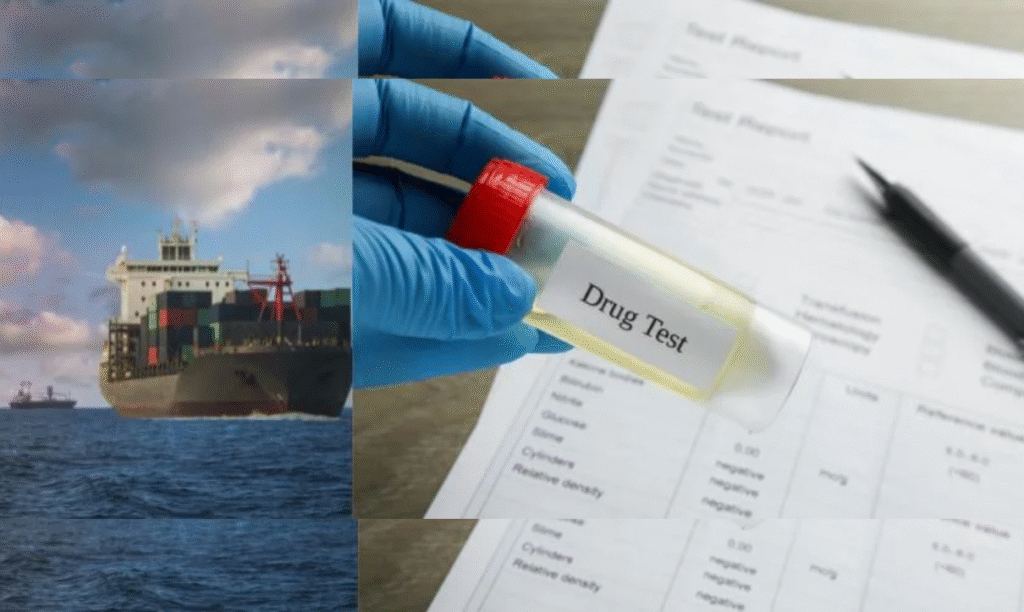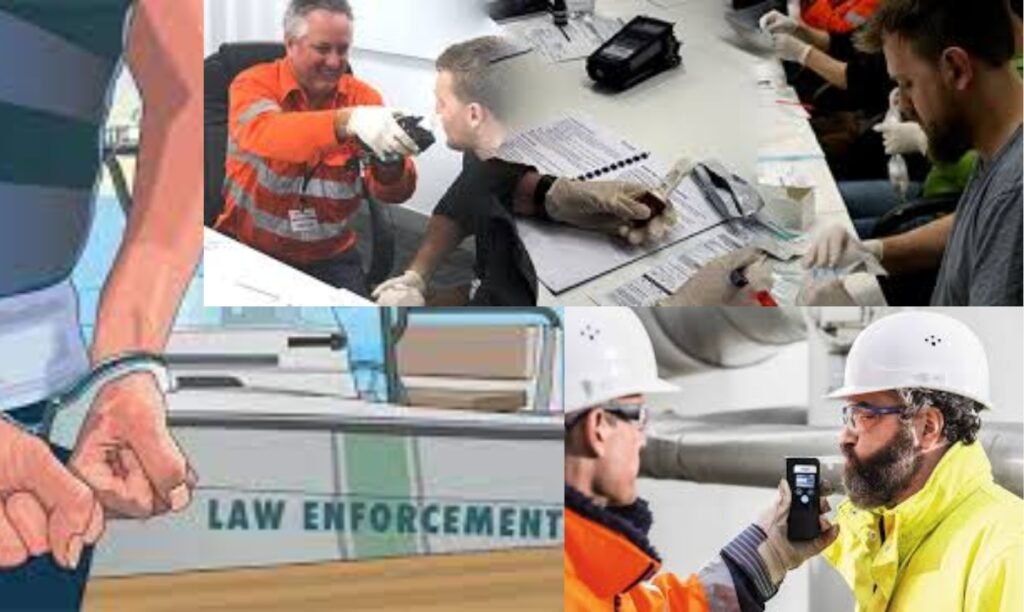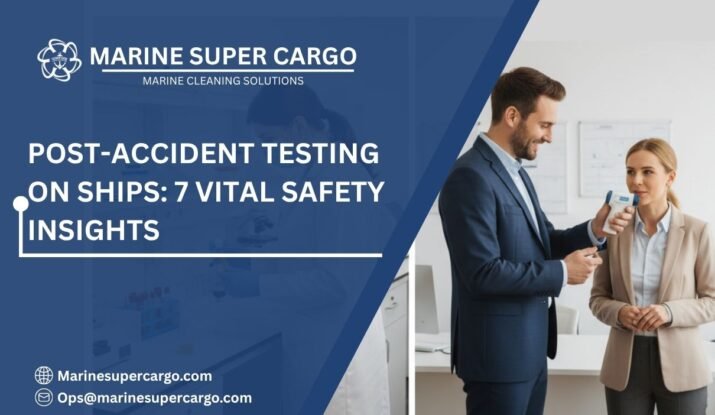If you’ve ever wondered what happens after a serious incident at sea, you’re not alone. Ship owners, operators, and managers often find themselves racing against time to protect their crew, their vessels, and their reputation. That’s where Post-Accident Testing plays a critical role. Think of it as a compass after a storm—it helps us navigate the chaos, find accountability, and steer back toward safety and compliance.
In this guide, we’ll walk you through why post-incident testing matters, how it’s done, what international maritime laws demand, and the cost-saving benefits it can bring. Together, we’ll unpack the hidden layers behind these procedures in simple, real-world terms.
Why Post-Accident Testing Matters
When a sudden accident occurs onboard, the first questions are always: What happened? and Why did it happen? Here is where Post-Accident Testing provides answers. Ships at sea are like moving ecosystems, and one wrong judgment can impact not just the crew but also global trade and marine life.
Testing crew members for drugs and alcohol after an incident removes doubts and guesswork. It ensures accountability, protects innocent crew members, and prevents recurring accidents. Just as a lighthouse prevents ships from drifting into dangerous waters, testing creates a guiding light for better decisions. For ship owners, this means fewer lawsuits, reduced downtime, and easier insurance claims.

Regulatory Framework You Must Know
Post-Accident Testing is not just a company policy—it’s mandated by international authorities. The International Maritime Organization (IMO) and MARPOL Convention set clear expectations around safety and pollution prevention. Failure to comply can mean heavy penalties and damaged reputations that take years to rebuild.
The International Marine Contractors Association (IMCA) also provides practical guidance. These bodies require immediate and unbiased testing after accidents involving injury, fatality, or damage to ship and cargo. By adhering to these laws, ship operators show due diligence and shield their business operations from unnecessary risks.
When Is Post-Accident Testing Required?
Not every slip on deck calls for Post-Accident Testing, but certain incidents demand it without question. These include:
- Fatalities onboard
- Serious personal injuries
- Accidents causing major property damage
- Vessel collisions or groundings
- Oil spills or environmental harm
Think of it like a fire alarm—it doesn’t go off for a dropped match, but it will for a raging blaze. The testing ensures clarity in events that could disrupt not just operations but also surrounding communities and ecosystems.
The Step-by-Step Testing Process
Post-Accident Testing follows a strict chain of custody. Every sample is documented, so there’s no chance of tampering or dispute later. Typically, it involves:
- Immediate Notification – The master alerts the company and authorities.
- Sample Collection – Blood, urine, or breath tests are carried out onboard or in port.
- Secure Transportation – Samples are sent to accredited laboratories.
- Analysis – Results are compared with international benchmark levels.
- Documentation – Findings are officially recorded for compliance.
This process works like a forensic investigation, preserving trust and accuracy. For ship managers, the advantage is having evidence that holds up in legal and insurance contexts. Learn more about the Importance of Drug Testing at Work.
Protecting Crew Safety and Well-being
At the heart of Post-Accident Testing lies one critical value: protecting the crew. Imagine running a ship where everyone can work without worrying if the person next to them is impaired. Proper testing ensures a safer work environment by discouraging substance abuse on board.
It also creates a culture of transparency. Crews know that safety is a shared responsibility. In the long run, this builds morale and reduces turnover—something every operator understands as vital for smooth, cost-effective voyages.
Costs: Saving More by Spending Wisely
At first glance, Post-Accident Testing may seem like an expense. But in reality, it’s an investment. The cost of one maritime accident—from repairs, cargo losses, insurance premiums, and legal fees—can run into millions.
When set against these figures, testing costs are minimal. Think of it like servicing an engine regularly instead of replacing it when it fails. By catching issues early, you save not only money but operational downtime and reputation, both of which are priceless in global trade.
✅ 4 Things to Check for Safety at Sea pic.twitter.com/dAxhJQ2i6U
— Marine Super Cargo (@Marinsupercargo) September 14, 2025
Environmental and Legal Impacts
The oceans are our shared heritage, and an accident linked to impairment can cause lasting damage to marine ecosystems. Oil spills, chemical leaks, and vessel groundings harm biodiversity and disrupt ports worldwide.
This is why MARPOL rules and IAPH (International Association of Ports and Harbors) guidance strongly emphasize responsible behavior in shipping. Post-Accident Testing creates a record of accountability, ensuring that environmental obligations are never sidelined in the pursuit of profit. Protecting the seas is no longer optional—it’s a moral and operational imperative.
Marine Supercargo Expands Services: Drug & Alcohol Testing for Safer Seas
Marine Supercargo, known globally for its advanced marine cleaning platform, has recently broadened its services to include professional Drug & Alcohol Testing for ships. This expansion is designed to help ship owners, operators, and managers enhance compliance, protect crews, and improve operational safety.
Beyond cleaning and hull maintenance, accurate substance testing ensures that maritime operations align with international requirements like IMO and IMCA standards. For managers, this is more than just regulation—it’s peace of mind. By offering integrated safety solutions in addition to cleaning, Marine Supercargo strengthens the industry’s collective commitment to safer seas. Also read about underwater hull cleaning in Balanka.
Lessons from Real-Life Incidents
History has shown us that substance misuse on board has played a role in some catastrophic accidents. For example, investigations into certain oil tanker groundings revealed that impaired judgment contributed to delayed actions or poor navigation.
Retelling these stories isn’t about fear—it’s about prevention. Every manager and ship owner can learn from the mistakes of the past. By ensuring effective Post-Accident Testing, we avoid repeating history and instead write a safer future for global shipping.

Looking Ahead: The Future of Testing
The next decade is likely to bring innovations in testing technology. From onboard instant detection systems to AI-driven analysis, the future will make Post-Accident Testing faster and more reliable.
Imagine portable devices that give accurate results within minutes at sea, reducing downtime and strengthening compliance checks. With digital records securely stored and shared across stakeholders, transparency will improve drastically. For the shipping industry, this isn’t just progress—it’s survival in a future where sustainability and accountability rule the seas
Conclusion
Post-Accident Testing is much more than a regulatory requirement—it’s a shield for your crew, your ship, and the ocean itself. Three critical takeaways:
- It ensures legal compliance with IMO, MARPOL, and IMCA.
- It protects lives and builds trust among crew members.
- It saves costs by avoiding lawsuits, penalties, and downtime.
For ship owners and operators who wish to stay ahead of safety and compliance, now is the time to act. Explore professional testing and marine solutions at CleanShip.co to secure a safer, smarter, and more sustainable fleet.
FAQs:
Q1. Why is Post-Accident Testing important on ships?
It helps identify whether drugs or alcohol contributed to an incident, protects the crew, and ensures compliance with international maritime safety laws.
Q2. How soon should Post-Accident Testing take place?
Testing should be carried out as soon as possible—ideally within hours of the incident—to ensure accuracy and credibility of results.
Q3. Does Post-Accident Testing apply to minor accidents?
No. It primarily applies to serious accidents involving fatalities, injuries, collisions, or major damage where accountability must be established.
Q4. How does testing support environmental compliance?
By ensuring that crew impairment is ruled out, testing helps prevent accidents that could cause oil spills, chemical leaks, or other environmental harm.
Q5. What’s the link between hull cleaning and crew testing?
Both reduce risks—hull cleaning improves efficiency and reduces emissions, while testing cuts human error caused by substance misuse. Together, they strengthen maritime safety.


